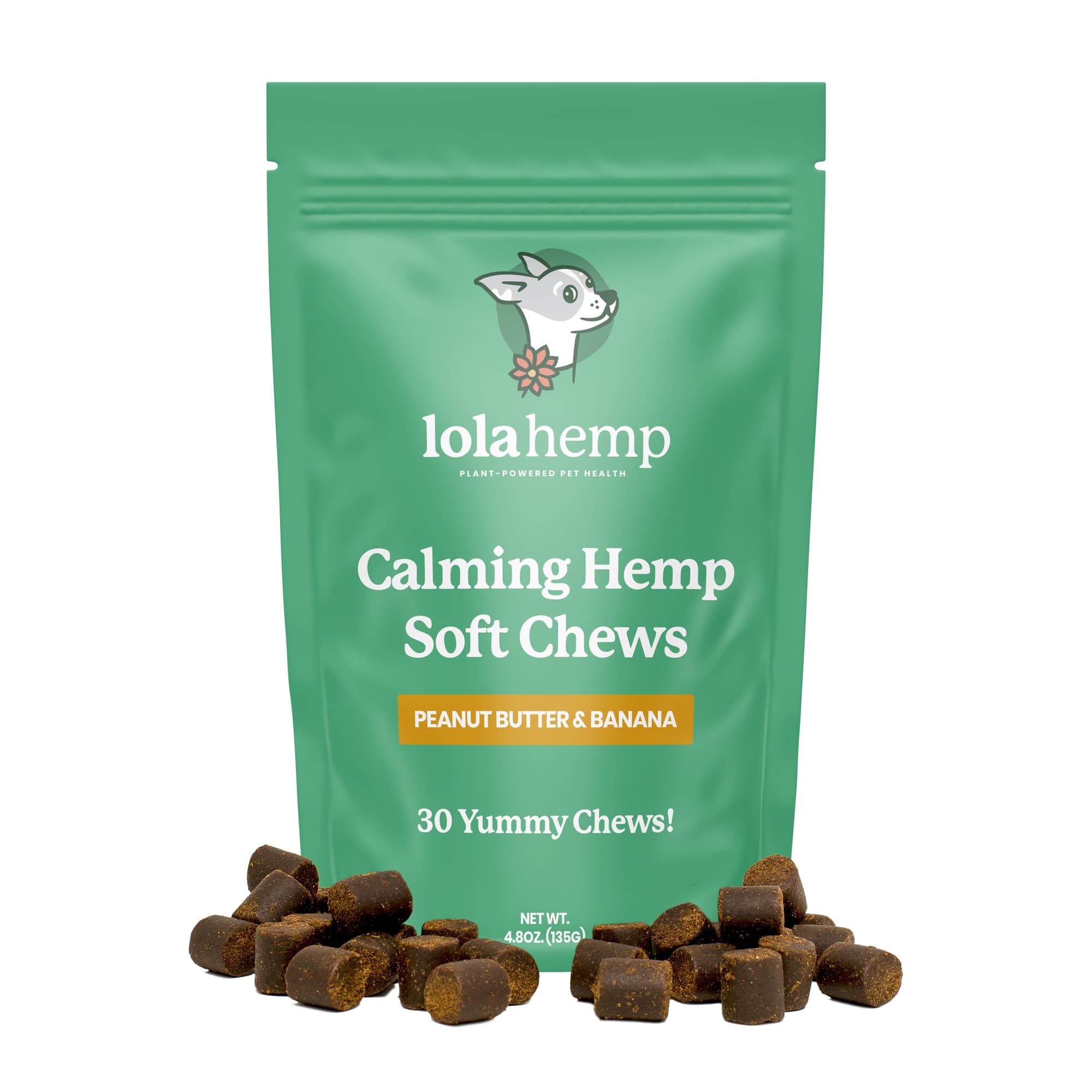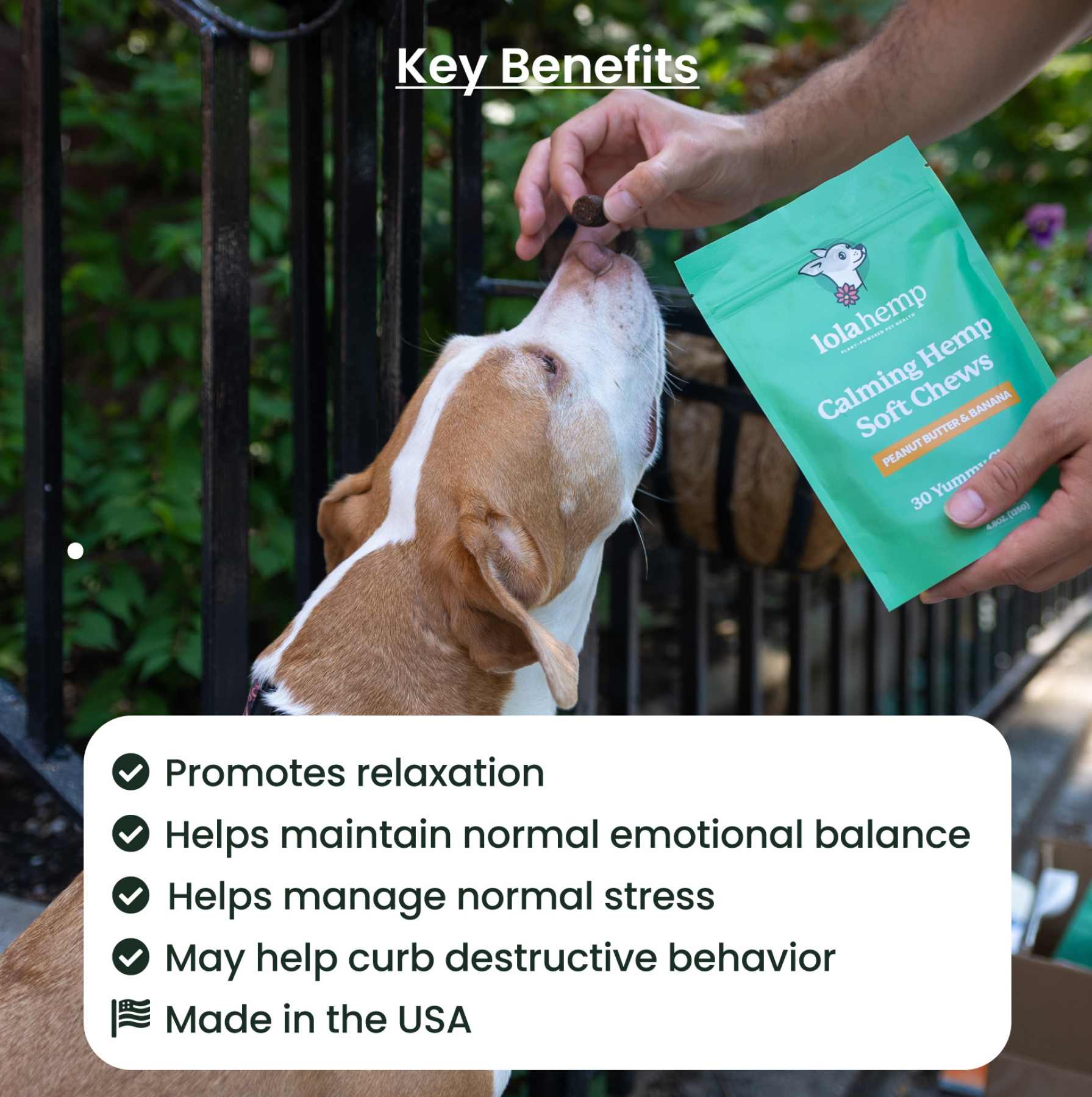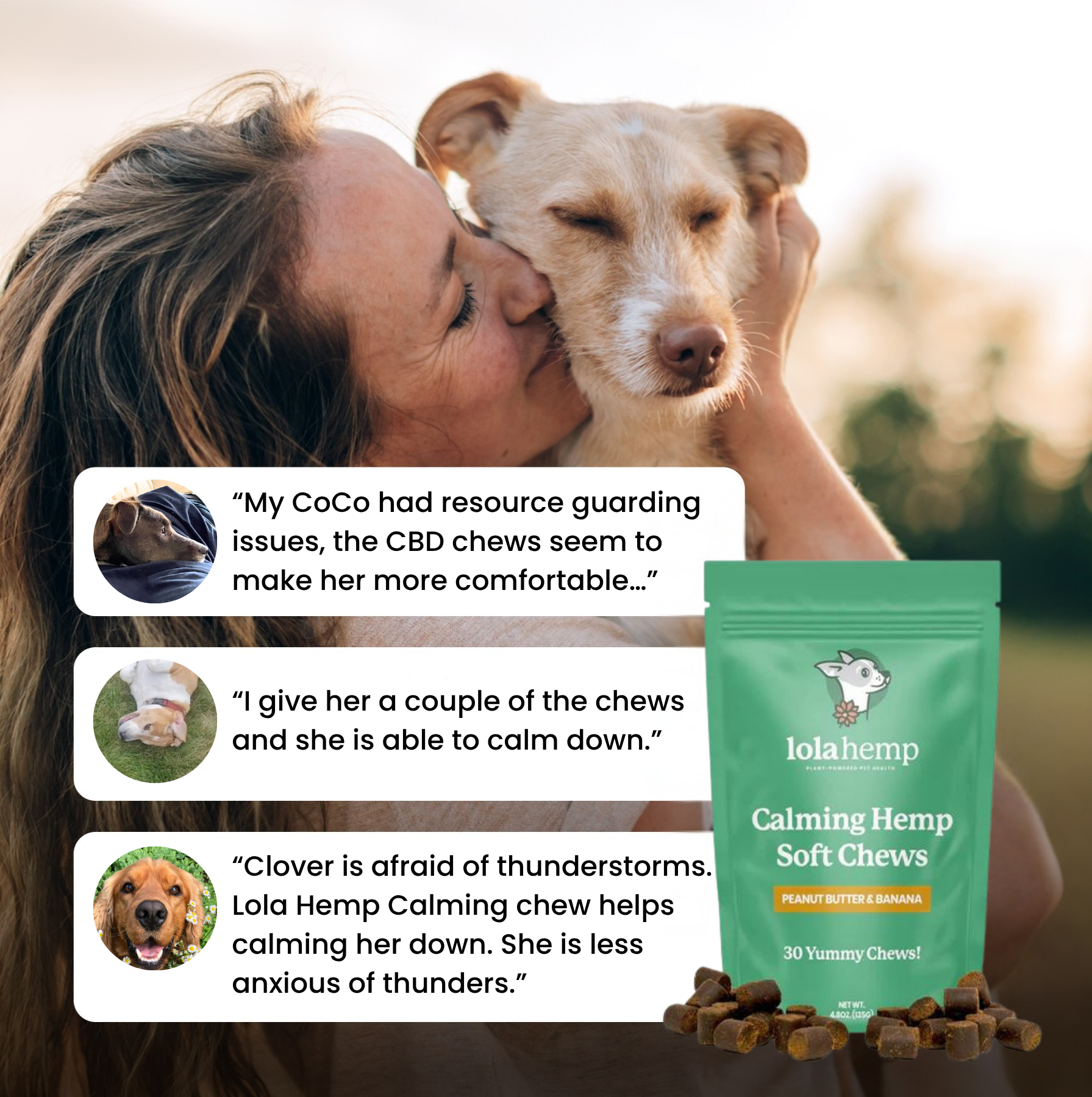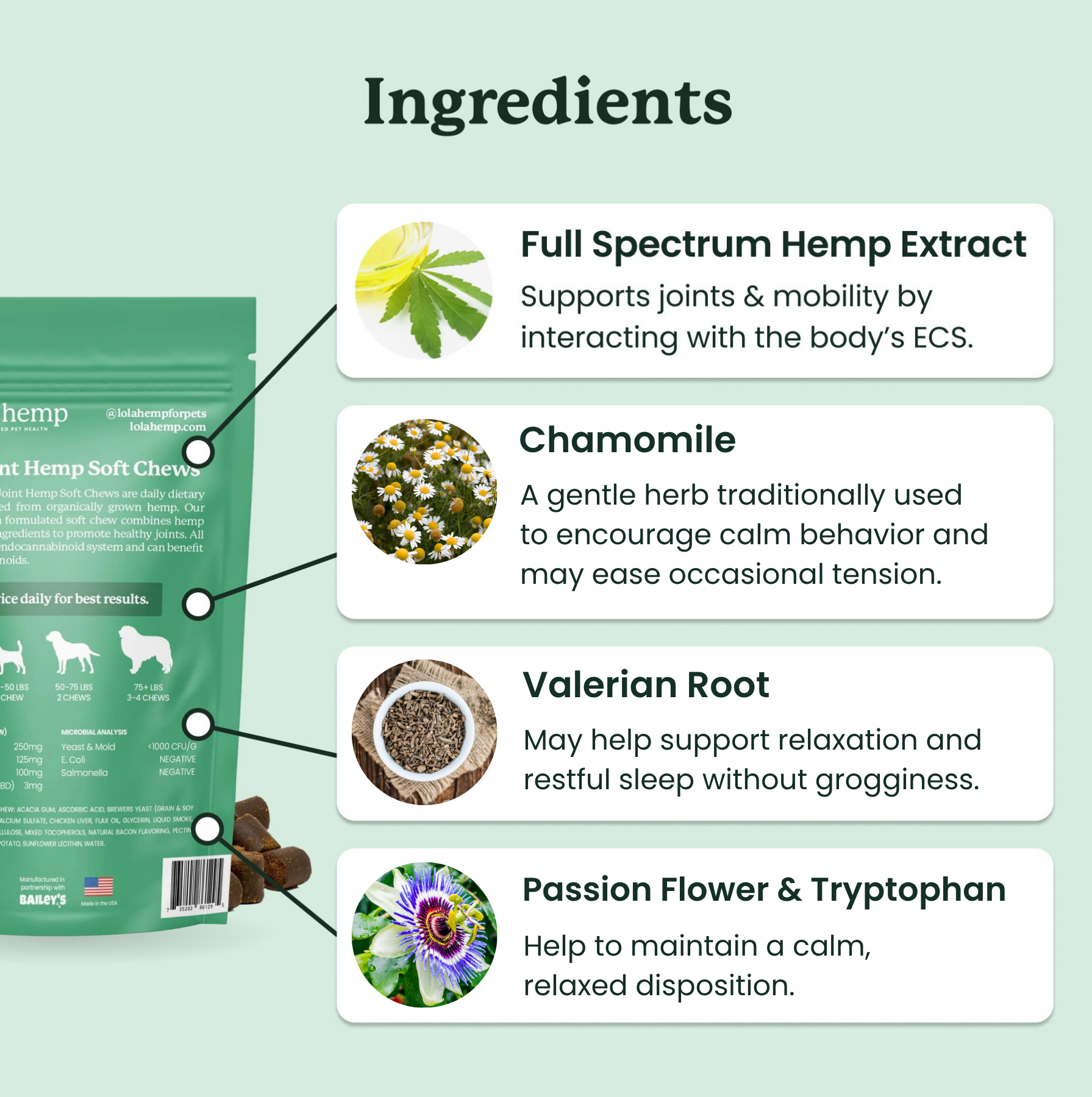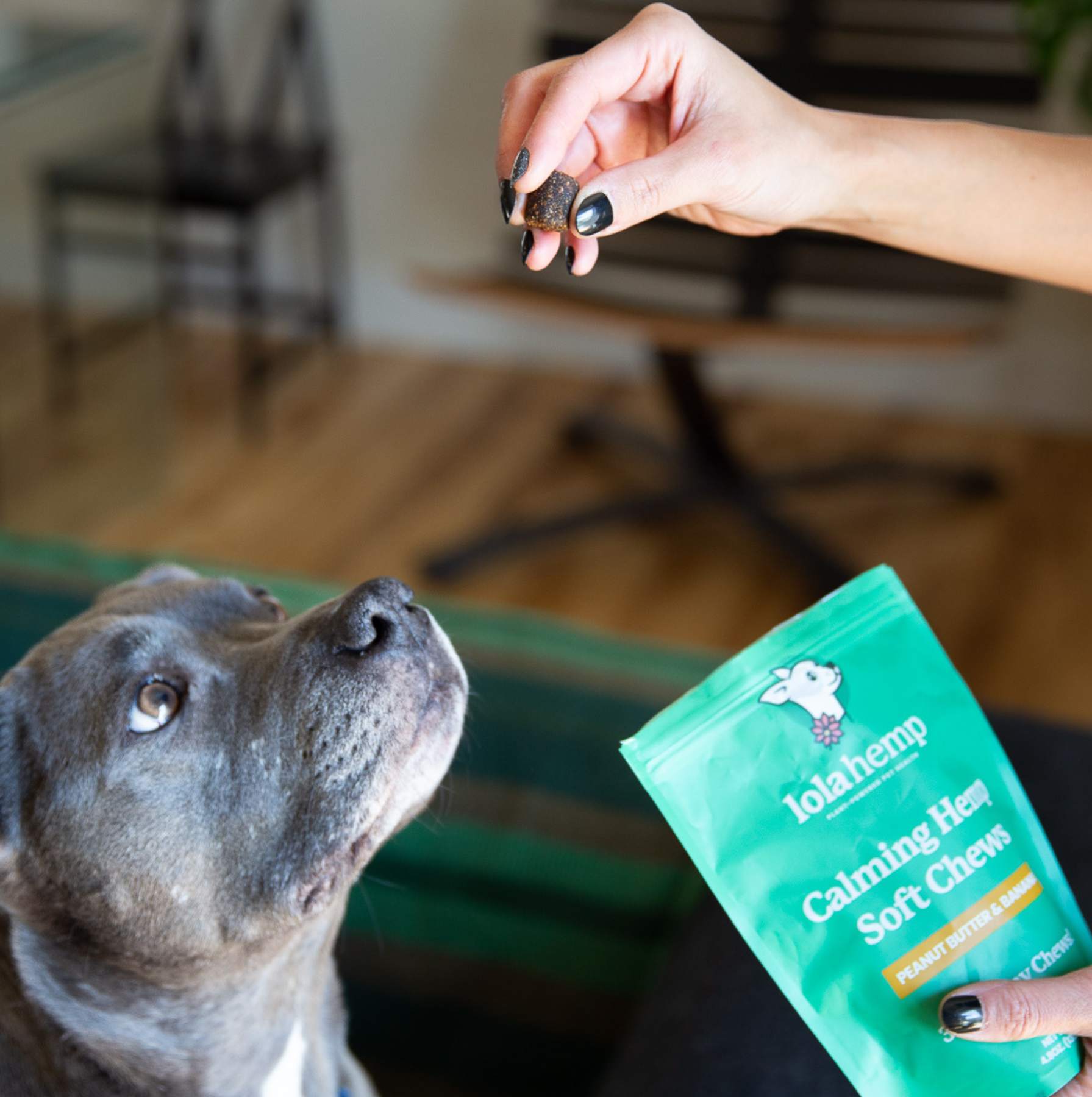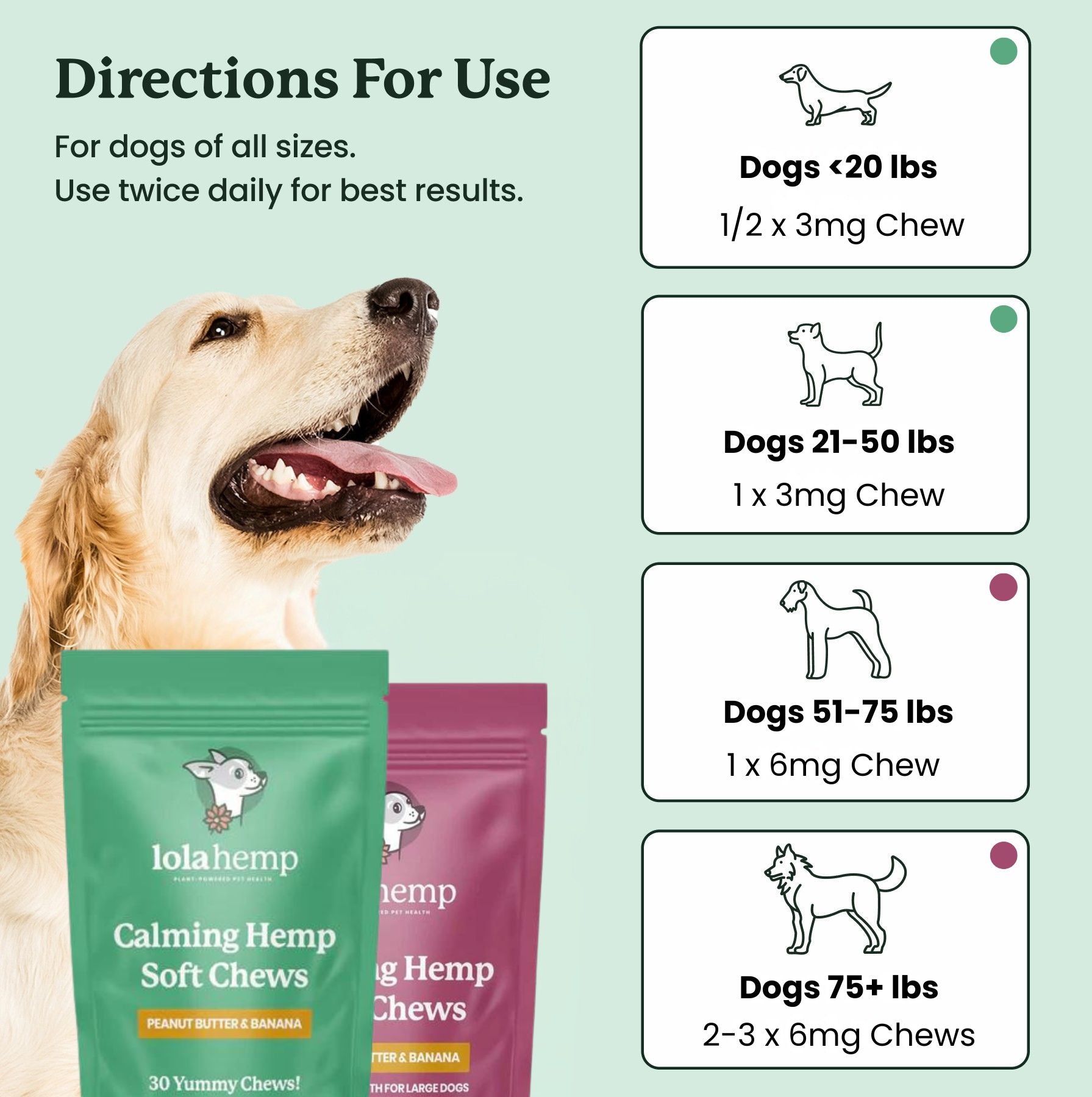Many of us know what it's like to have a dog that just won't settle down. Maybe they're rambunctious and energy-filled beyond the normal range, or maybe they even have some form of anxiety contributing to their behavior.
In any case, it's important to find ways to help them with these restless and distressing feelings. For one, a happy and stress-free dog is a healthier dog. Second, anxiety and restlessness can lead to destructive behavior, and even cause your dog to run off or get themselves into danger.
On the flip side, some anxiety medications for dogs can have seriously negative side effects. Even if they're effective at reducing anxiety, they can lead to significant changes in your dog's personality, leaving them "zombified."
That's why we looked into the research on drug-free ways to help your dog calm down. We're going to look at some of the best techniques, behavioral and supplemental, that may be able to get your dog to a healthier place mentally — without the use of drugs.
We'll look at some short training options you can explore, a few enrichment activities that help dogs calm down, and a few supplements that are natural and won't change your dog's personality.
Let's get started.
4 Micro-Training Options That Can Help Calm Dogs
These "micro-training" options are minimal, and you can incorporate them into your lifestyle without investing in a years-long plan of training and maintaining behavioral standards. In other words, these are just little things you can do with your dog that will help them remain calm more of the time.
1. The Treat Toss Reset
(Technique: "Find It")
Toss a treat and say “Find it!” It’s simple, fast, and powerfully effective.
Why it works: This mini-game taps into your dog’s natural sniffing and foraging instinct. According to a 2019 study by Duranton & Horowitz (Let Me Sniff!), dogs engaging in nosework and scent-based games showed reduced cortisol levels and displayed a more positive emotional outlook. That means sniffing = stress relief.
Use it: Before stressful events (guests, walks, vet visits) or during overstimulation to redirect and reset focus.
2. The 1-2-3 Safety Game
(Technique: Pattern Games)
Count out loud: “1, 2, 3” – and give a treat on “3” while calmly walking or standing.
Why it works: Pattern games, as designed by Leslie McDevitt (Control Unleashed), are built on predictability. Structured routines like these help reduce reactivity and anxiety by giving the dog something reliable to latch onto.
Use it: In moderately stressful environments (on leash, at the park, near distractions) to help your dog stay mentally anchored.
3. Safe Space Training
(Technique: Go-to-Place / Mat Work)
Teach your dog to go to a mat or bed on cue, and reward calm behavior when they settle.
Why it works: “Place” training gives dogs a certainty anchor—a safe, defined space to settle. Consistent mat training helps anxious dogs become more confident and reduces reactive episodes over time.
Use it: As part of daily routines, during mealtime, or when guests arrive. Reinforce with calming rewards like lick mats or chew toys.
4. The “Look at Me” Focus Break
(Technique: Eye Contact Cue)
Ask your dog to look at you on cue—either “Look” or “Watch Me.” Reward them when they do.
Why it works: This simple redirect builds handler focus and breaks fixation on environmental triggers. It’s a proven force-free technique for emotional regulation and reactivity.
Use it: When your dog is starting to spiral—like spotting another dog or reacting to a noise.
Final Thought on Micro Trainings
These techniques may seem simple, but they’re rooted in behavioral science and designed to calm the nervous system. Whether you’re dealing with an anxious rescue pup or a dog that gets overstimulated easily, microtraining is one of the most effective and gentle ways to create calm, connection, and confidence.
3 Mental Enrichment Options That May Calm Your Dog
Mental enrichment differs from training in that it gets woven into your dog's life, gradually uplifting their mood overall. Daily enrichment activities can reset and restore your dog's good mood, helping them to break negative thought cycles or anxious behaviors that were left untended before.
Try incorporating these methods into your dog's life, however much or little you can.

1. The Snuffle Safari
(Activity: Snuffle Mat / Foraging Games)
How it works: Toss a few treats into a snuffle mat and let your dog sniff them out.
Why it helps: Scent-based games lower cortisol levels and promote positive emotional bias. The act of sniffing engages dopamine-linked systems for calm focus.
2. The Chill & Lick Station
(Activity: Frozen Lick Mat with calming ingredients)
How it works: Spread a mix of pumpkin, yogurt, kefir, or wet food on a lick mat. Freeze and serve during high-stress times.
Why it helps: Licking is a self-soothing behavior shown to activate the parasympathetic nervous system. Add a few drops of Lolahemp Calming CBD Oil for added support.
3. The Mystery Box Challenge
(Activity: DIY Puzzle Box / Shredding Game)
How it works: Fill a cardboard box with paper, towels, or toys and hide treats inside. Let your dog shred and explore.
Why it helps: Problem-solving enrichment builds confidence and relieves stress, especially in anxious dogs.
2 Natural Supplements to Help Your Dog Relax
Many natural supplements have been shown to significantly reduce stress-related behaviors in dogs, and they often come without the side effects of strong medications. The two natural ingredients below—hemp and chamomile—have both had peer-reviewed studies supporting their ability to encourage calm in dogs.
1. Full-Spectrum Hemp Oil (CBD Oil)
CBD oil works with a dog's endocannabinoid system to maintain a healthy, balanced temperament. It doesn’t get dogs “high,” but rather helps regulate physiological stress responses and promotes balance in the nervous system.
The result is often a calmer, less reactive dog. Lolahemp offers calming CBD options for dogs made with organic hemp and clean ingredients.
2. Chamomile
Chamomile is a widely used herbal remedy for anxiety in both humans and animals. This gentle herb contains apigenin and bisabolol, which bind to GABA receptors to promote calm without sedation.
Veterinary herbalists recommend chamomile for mild anxiety, digestive upset, or stress. Studies have shown it may support more balanced behavior when used regularly.
Lolahemp's Calming CBD Oil combines CBD, chamomile, and L-theanine for maximum natural relief.
Conclusion
There are plenty of options to try as you work to get your dog's anxiety and distress under control. The best part is, you don't necessarily need prescription medications; behavioral, environmental, and natural options are great places to start. Always talk with your veterinarian before starting new treatments or supplements.
Jump to FAQs about Calming Dogs Naturally
Frequently Asked Questions About Calming Dogs Naturally
1. What are natural ways to calm my dog without medication?
Microtraining, scent work, enrichment activities, and natural supplements like CBD oil or chamomile can help reduce anxiety safely without sedating your dog.
2. Does CBD really help with dog anxiety?
Some studies and anecdotal evidence suggest that CBD may support calm behavior and stress regulation in dogs. Always use pet-formulated, lab-tested products and consult your vet.
3. Is chamomile safe for dogs?
Yes, when used appropriately. Chamomile is well-tolerated and supports calm behavior through its natural interaction with GABA receptors in the brain.
4. What enrichment activities help dogs calm down?
Snuffle mats, lick mats, and puzzle boxes provide mental engagement that reduces anxiety and promotes relaxation.
5. How long does it take to see results from calming supplements?
Some dogs respond within hours, while others may take several days to a week of consistent use. Every dog’s response varies depending on their physiology and stress level.

